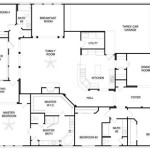Average Cost of a 4-Bedroom House: A Comprehensive Overview
Determining the average cost of a 4-bedroom house is a complex undertaking, influenced by a multitude of factors ranging from location and size to market conditions and construction quality. A simple numerical figure often fails to capture the nuances inherent in the real estate market, but providing a general understanding of the variables at play can offer valuable insights to potential homebuyers and investors.
The following sections will delve into the primary factors impacting the cost of a 4-bedroom house, exploring regional variations, property characteristics, and current market trends. This information is intended to provide a broad overview and should be supplemented with local market research and professional advice before making any property purchase decisions.
Location, Location, Location: The Dominant Factor
The geographic location of a property exerts the most significant influence on its price. Real estate values are intrinsically tied to the desirability of a specific area, a factor determined by elements such as proximity to urban centers, employment opportunities, school districts, amenities, and overall perceived quality of life. Coastal regions, for example, typically command higher prices than inland areas, driven by demand for waterfront properties and associated lifestyle benefits.
Within a single metropolitan area, significant price variations can exist between different neighborhoods. Areas with highly-rated schools, low crime rates, and convenient access to transportation networks tend to be more expensive than those lacking these attributes. Furthermore, the prestige associated with a particular neighborhood can also play a role in inflating property values. Data from real estate websites and local real estate professionals provide valuable insights into the average prices of 4-bedroom houses in specific areas.
Land value also forms a substantial part of the overall property cost, particularly in densely populated areas. As land becomes scarcer, the price per square foot increases, leading to higher overall property valuations. This explains why similar-sized 4-bedroom houses can vary drastically in price depending on the location of the lot.
The economic health of a region directly impacts the housing market. Areas experiencing strong job growth and economic prosperity tend to have higher housing demand, pushing prices upward. Conversely, regions facing economic downturns may experience a decline in property values. Understanding the economic landscape of a specific area is crucial when evaluating the affordability of a 4-bedroom house.
Property Characteristics: Size, Condition, and Features
Beyond location, the physical characteristics of the house itself play a crucial role in determining its price. The square footage of the living space is a primary indicator of value, with larger houses naturally commanding higher prices. However, the layout and functionality of the space are equally important. A well-designed house with an efficient floor plan and ample natural light will be more desirable than a poorly designed house with the same square footage.
The condition of the property also has a significant impact on its value. A newly built or recently renovated house will typically be priced higher than an older house requiring significant repairs or upgrades. Factors such as the age and condition of the roof, HVAC system, plumbing, and electrical wiring must be considered when assessing the overall value of a property. A thorough inspection by a qualified professional can reveal potential issues and help determine the true cost of ownership.
Features and amenities included in the house can also influence its price. Items such as updated kitchens and bathrooms, hardwood floors, fireplaces, swimming pools, and landscaping can all add value to a property. The quality of the materials used in the construction and finishing of the house also plays a role. High-end materials and fixtures will generally command a higher price than standard options.
The lot size and configuration can also contribute to the overall property value. A large, well-landscaped lot with mature trees and outdoor living spaces is generally more desirable than a small, bare lot. Features such as a detached garage, workshop, or storage shed can also add value to the property.
Energy efficiency is becoming an increasingly important consideration for homebuyers. Houses with energy-efficient features such as solar panels, energy-efficient windows, and high-efficiency HVAC systems may command a premium in the market due to the long-term cost savings associated with reduced utility bills.
Market Conditions: Supply, Demand, and Interest Rates
The overall state of the real estate market plays a crucial role in determining housing prices. Market conditions are primarily influenced by the balance between supply and demand. In a seller's market, where demand exceeds supply, prices tend to rise due to increased competition among buyers. Conversely, in a buyer's market, where supply exceeds demand, prices tend to fall as sellers compete to attract buyers.
Economic factors such as interest rates, inflation, and unemployment rates can also influence the housing market. Low interest rates make it more affordable for buyers to finance a home purchase, leading to increased demand and potentially higher prices. Conversely, rising interest rates can dampen demand and put downward pressure on prices. Inflation can also affect housing prices, as the cost of building materials and labor increases.
Seasonal trends can also play a role in the real estate market. In many areas, the spring and summer months are typically the busiest times for buying and selling homes, leading to increased competition and potentially higher prices. The fall and winter months tend to be slower, which may present opportunities for buyers to negotiate better deals.
External factors such as government policies, zoning regulations, and environmental regulations can also impact the housing market. Changes in zoning regulations can affect the supply of land available for development, while environmental regulations can impact the cost of construction. Government policies such as tax incentives and mortgage assistance programs can also influence housing demand.
The general sentiment of the market also plays a role. If buyers feel optimistic about the future, they are more likely to be willing to pay higher prices for homes. Conversely, if buyers are pessimistic about the future, they may be more hesitant to make a purchase, leading to lower prices.
It's crucial to consider the current state of the market when evaluating the average cost of a 4-bedroom house. Data from real estate websites, local real estate professionals, and economic reports can provide insights into current market trends and help you make informed decisions.
Ultimately, determining the average cost of a 4-bedroom house requires a comprehensive analysis of multiple factors. Location, property characteristics, and market conditions all play a significant role in determining property values. By conducting thorough research and consulting with qualified professionals, buyers and investors can gain a better understanding of the market and make informed decisions that align with their individual needs and financial goals.
Accessing recent comparable sales, or "comps," in the target area is essential. Real estate agents have access to the Multiple Listing Service (MLS), a database containing detailed information on recently sold properties. Examining these comps provides a clearer picture of what similar 4-bedroom houses have recently sold for, accounting for variations in size, condition and features.
Furthermore, understanding the financing options available is also crucial. Mortgage rates, down payment requirements, and closing costs can significantly impact the overall affordability of a 4-bedroom house. Consulting with a mortgage lender can provide a pre-approval, which outlines the amount a potential buyer can borrow, and allows for a more realistic assessment of the financial feasibility of the purchase.

4 Bedroom House Plan Examples

Average Cost To Build A 4 Bedroom House G J Gardner Homes

Cost To Build A House In Wisconsin Fixr

Average Cost To Build A 4 Bedroom House In Architecture Design

How Much Does A Four Bedroom House Cost Frome Agent Compares Regional Averages Property News Nub By Laura Linham

Why Are 3 4 Bedroom Homes At Record Prices
4 Bedroom House Plans Top 8 Floor Design Ideas For Four Bed Homes Architecture

4 Bedroom House Plan Examples

Cost Of Building A 4 Bedroom House In Ghana

Average Cost To Build A 4 Bedroom House In Melbourne Housespec








